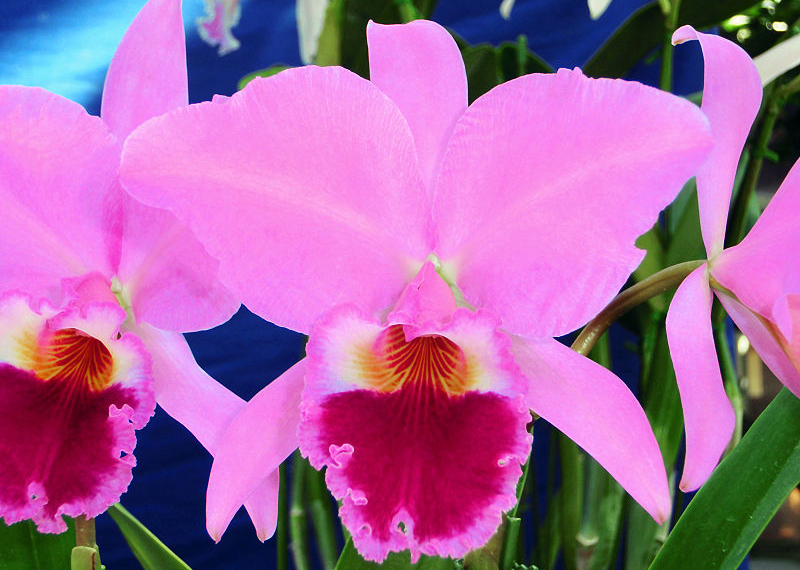Packaging often features discoveries by happenstance. While on a hunting trip in Mississippi, President Theodore “Teddy” Roosevelt refused to shoot a helpless bear that had been tied to a tree. Teddy Roosevelt would not kill in such an unsportsmanlike way. Hearing of this, New York toymaker Morris Michtom created a stuffed bear that he called Teddy's Bear.
While Teddy bears’ hearts are made of love, their bodies were traditionally stuffed with a common packaging material, wood shavings known as excelsior (from Latin, meaning ever upward). When William Cattley received a shipment of plants, he was fascinated by the packing material, not the excelsior wood shavings, but an unnamed orchid. Cattley nursed the orchid back to health, and it bloomed to great excitement. The wayward orchid was named in Cattley's honor, and today we have the Cattleya orchid.
Once common in corsages, showy Cattleya orchids bloom in a wide range of colors with frilly, long-lasting, waxy blooms. They are gaining popularity as houseplants because they often bloom two to three times per year, although most flower once a year. Some Cattleyas are even fragrant. They are ephiphytes, or tree-growing plants that need very little soil, and can grow in a tree crotch or even cracks in rocks. These are long-lived perennials, with some Cattleya orchids living for half a century.
To successfully grow Cattleya orchids, choose an area that gets plenty of bright light, but avoid hot, direct sunlight that can burn them. A south-facing or east-facing window is ideal. Water Cattleya orchids in the morning using lukewarm water. This lets the orchid dry before cooler night temperatures. Let the orchid’s roots fully dry out between waterings. This is why it is important to use a potting mix that drains well, such as medium-grade fir bark. Usually you need to water more often when it is warmer and less frequently during cooler months. After the last flower drops, cut the flower spike completely down the stem.
You can tell if your Cattleya orchid is getting enough light if the leaves are a medium-green color and the pseudobulbs are upright. If it is getting too much light, the leaves have a purple or red color. To increase humidity, you can mist the plants in the morning or set them on a tray of pebbles filled with water. Prevent disease by keeping air circulating around the orchids. You can use a slow ceiling fan or a small desk fan.
Fertilize Cattleya orchids while they are rapidly growing. Use special orchid fertilizer (20-20-20) every two weeks. Just remember to never fertilize your orchid when the soil is completely dry, because this could burn the roots. Clay pots are best for Cattleya orchids because the clay lets the pot breathe, and the water evaporates quicker so the roots do not rot from standing water. You can divide your Cattleya orchids after they have bloomed and start to show new growth. After dividing, be sure to keep the humidity high while they grow new roots.
As for that first teddy bear maker? Morris Michtom turned his excelsior-stuffed Teddy bears into the Ideal Toy Company, America's largest doll-making company. Excelsior, or ever upward, indeed!






















































